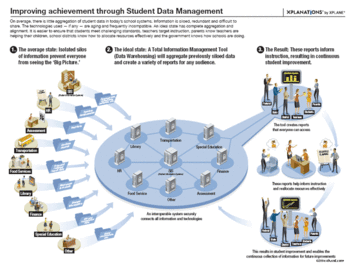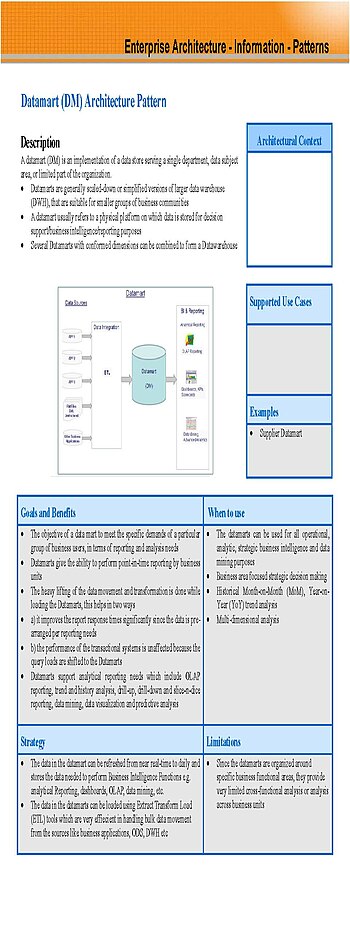 Image via Wikipedia
Image via Wikipedia
“What do you do?”
I am asked this question frequently. Family members, church friends, even recruiters and coworkers sometimes ask this question.
Depending on the audience, I will say something like “work with computers”, or “I’m a DBA.” or “I’m a database developer.”
Dr. Richard Feynman once said: “If you can't explain something to a first year student, then you haven't really understood it.”
The DAMA –
Data Management Body of Knowledge is a work that attempts to document and formalize the definition of the Data Management profession.
According to the book, a Data Management Professional is responsible for the planning, controlling and delivery of data and information assets.
The thing that impressed me the most is that it brought together so many formal definitions of many various concepts that I work with on a daily basis. Whole books can, indeed have, been written on each component of data management touched on in the body of knowledge. One of the values of this book is the bibliography. If one were to acquire every book referenced in this work they would have an impressive library of data management knowledge.
Another thing that was impressive to me is this book advocates the role of the Data Management Executive. The Data Management Executive is defined as: “The highest-level manager of Data Management Services organizations in an IT department. The DM Executive reports to the CIO and is the manager most directly responsible for data management, including coordinating data governance and data stewardship activities, overseeing data management projects and supervising data management professionals. May be a manager, director, AVP or VP.” I have worked with and in many organizations; very few actually had an “official” data management executive. As a result, data movement into and out of the organization has been something of a haphazard process. Each project that required movement of data was approached differently. If a single official point of contact for all data management activities existed, then these projects could have been more streamlined to fit into an overarching design for the enterprise as a whole.
Each chapter covers a different aspect of the overall Data Management Profession. The first chapter gives an overview of why data is a corporate asset. The definition of data as a corporate asset is the foundation of all data management activities. Focusing on data as an asset first, then the follow on activities discussed in the major component chapters are seen as value-add activities.
The major components of Data Management covered by the chapters and the definitions the DMBOK provides are:
Data Governance: The exercise of authority and control (planning, monitoring and enforcement) over the management of data assets. The chapter gives an overview of the data governance function and how it impacts all of the other functions. Data Governance is the foundation for the other functions.
Data Architecture: An integrated set of specifications artifacts used to define data requirements, guide interaction and control of data assets, and align data investments with business strategy.
Data Development: The subset of project activities within the system development lifecycle (SDLC) focused on defining data requirements, designing the data solution components and implementing these components.
Data
Operations Management: The development, maintenance and support of structured data to maximize the value of the data resources to the enterprise. Data operations management includes two sub-functions: database support and data technology management.
Data Security Management: The planning, development and execution of security policies and procedures to provide proper authentication, authorization, access and auditing of data and information assets.
Reference and
Master Data Management: The ongoing reconciliation and maintenance of reference data and master data.
Data Warehouse and Business Intelligence Management: This is a combination of two primary components. The first is an integrated decision support database. The second is the related software programs used to collect, cleanse, transform, and store data from a variety of operational and external sources. Both of these parts combined to support historical, analytical and business intelligence requirements.
Document and
Content Management: The control over capture, storage, access, and use of data and information stored outside relational databases. Document and Content Management focuses on integrity and access. Therefore, it is roughly equivalent to data operations management for relational databases.
Meta-data Management: The set of process that ensure proper creation, storage, integration and control to support associated usage of meta-data.
Data Quality Management: A critical support process in organizational change management. Changing business focus, corporate business integration strategies, and mergers, acquisitions, and partnering can mandate that the IT function blend data sources, create gold data copies, retrospectively populate data or integrate data. The goals of interoperability with legacy or B2B systems need the support of a DQM program.
The last chapter covers
Professional Development, ethics, and how DAMA( Data Management International)
dama provides a professional society body or guild for the communal support of information and data management professionals.
Overall this is an outstanding book for defining the roles associated with data management. While it is light on details for implementing the programs, processes and projects that it defines, it is nevertheless a great book for creating a common vocabulary amongst professionals who work day-to-day in the data management profession.
The more we, as data management professionals, communicate consistently with business users, executives, and the public about what we do the better it will be for all of us when one of us is asked “what we do”.
My answer now is I am a Data Management Professional. I can assist you with better understanding, delivery, analysis, security and integrity of your data.











